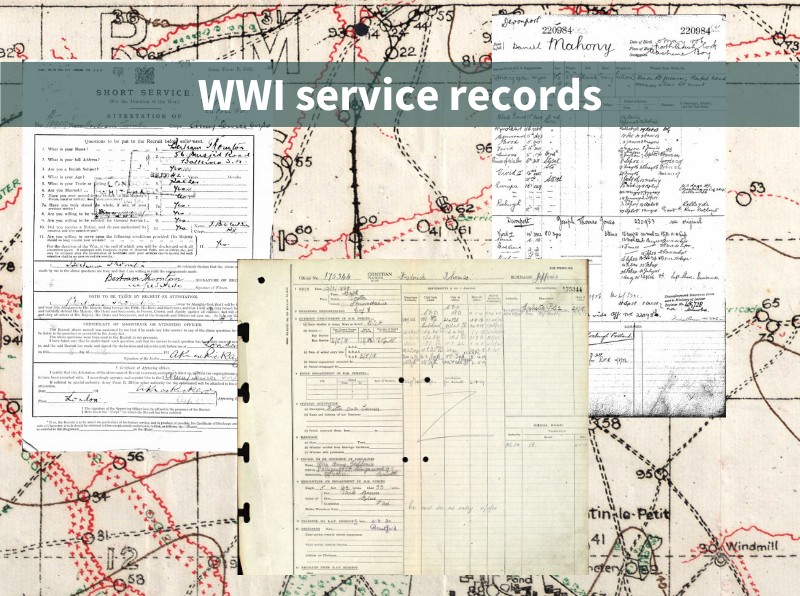Exploring WWI service records and what to look out for when researching military ancestors
There’s nothing like a service record when researching WWI ancestors. Packed with information and valuable clues, they are an important source for learning about your ancestors and their military service. Here’s what you should look out for when researching WWI service records.
What is a service record?
A service record is a record of a person’s service with the armed forces, whether with the army, navy, air force or nursing services. It covers their time with the forces, from their enlistment through to their discharge.
Service records differ from service to service and have changed over the centuries. With a service record, you should be able to establish key facts to help you understand your ancestors’ time with the military. You may discover when they enlisted, who they served with, where they served and if they were wounded. It could reveal the medals they were entitled to or if they passed any training courses. Ultimately, you may be able to piece together your ancestors’ movements using a service record which could lead to discoveries in other military collections, too.
Service records often contain personal details, like a person’s age, birthplace, next of kin, address and occupation. These are valuable clues to help you identify your ancestor in the records, particularly if they have a common name and you are presented with multiple candidates.
WWI British Army service records
The attestation page of a WWI British Army service record completed on enlistment is full of useful clues (this collection relates to other ranks, i.e. not officers). You’ll find information like their age, address, occupation and whether they had any previous military experience.
FWR Tip: Service records of WWI British Army officers are held at The National Archives in Kew.
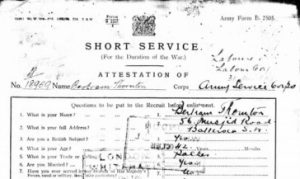
A key element to look out for is where and when your ancestors enlisted. This is a great piece of evidence to start the timeline of your ancestor’s military service:
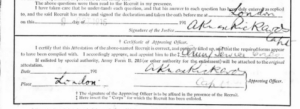
Many WWI British Army service records contain a physical description of the soldier. This is particularly beneficial if you do not have a photo of the individual, which allows you to form a pen picture of them.
FWR Tip: Around 60% of WWI British Army service records were destroyed or badly damaged during a German bombing raid in September 1940.
One of the most exciting aspects of a service record is that it allows you to piece together your ancestor’s movements during WWI and trace their journey. Discover when they departed for overseas service, when they joined their battalion, if they were hospitalised and where and when. The answers to these questions can be found in the ‘Casualty Form – Active Service’ section, as detailed below:
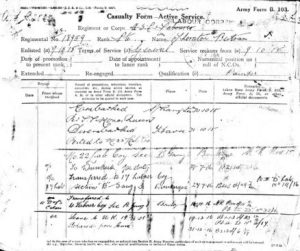
FWR Tip: Can’t find your ancestor’s British Army service record? If they claimed a pension because of their WWI service, they may appear in the WWI, British Army Pension Records collection.
WWI Royal Navy service records
If your ancestor was not an officer and served with the Royal Navy during WWI, then our Royal Navy Registers of Seamen’s Services collection could help you delve deeper into the service of your seafaring ancestors.
These service records are usually a single page, and the top of the page contains details like the sailor’s date and place of birth, trade, and number. You’ll also see the date they joined the Royal Navy, which is a useful clue when forming a timeline of their service. Interestingly, the physical description section notes whether your naval ancestors had any tattoos.
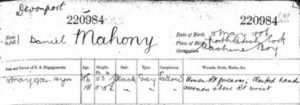
Down the left of the page, you will see the names of the ships your ancestor served on, accompanied by their rating and the dates of service on these ships (in the Royal Navy, non-officers were known as ‘ratings’ instead of ‘ranks’). Knowing the ships they served on and the dates will help you research the different vessels and the actions they were engaged in during the war.
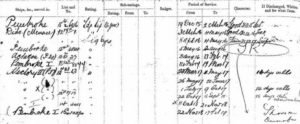
There are further points to look out for when studying a WWI Royal Navy service record. If you notice the rating ‘Boy’ on your ancestor’s service record, this indicates they joined up under the age of 18. There were two boys’ classes: Class 2 and Class 1. Their service as a ‘man’ was deemed to begin when they reached 18 years old.
Something you may encounter on a navy service record is a ship’s name accompanied by a ship in brackets. The ship in brackets is the seagoing ship or the ship they served in. The other is a shore station or an accounting base/depot ship.
FWR Tip: Need more advice on researching naval ancestors? Our blog, 7 essential military records for discovering navy ancestors, may hold the clues.
WWI Royal Air Force Records
The Royal Air Force (RAF) was formed on 1 April 1918 by merging the Royal Flying Corps (RFC) and the Royal Naval Air Service (RNAS). If your ancestor was not an officer, then our WWI Royal Air Force Airmens’ Service Records can help you learn more about their wartime experience with the RAF.
Personal details such as your ancestor’s date and place of birth, in addition to their next of kin, occupation, marriage date and physical description, are all noted on the left of the record. There is another important element on this side of the page: look out for the date your ancestors joined the RAF and if they transferred from the RFC or RNAS. If they did transfer from one of these branches, there may be a surviving service record.
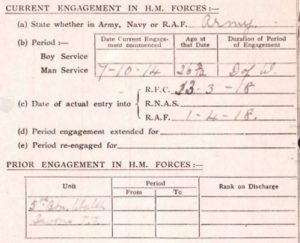
This page also contains details of the units your ancestor served with, helping you track their movements with the RAF during the latter stages of WWI. The unit is usually represented by an abbreviation:
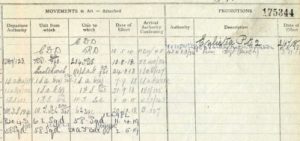
Your ancestors’ ranks and promotions are documented on the right of the page, and it may note their last rank with the RFC or RNAS.
Finally, the record is double-sided, and on the back, you can discover fascinating details like your ancestors’ RAF trade (the job they carried out while serving), the theatres of war they served in and the medals they were entitled to.

FWR Tip: You’ll find WWI service records of RAF officers on Ancestry.
Other WWI service records available on Forces War Records
- Household Cavalry Service Records, 1799-1920
- WWI, Royal Naval Volunteer Reserve Service Records, 1914-1919
- WWI, Women’s Royal Air Force Service Records, 1918-1920
- Royal Naval Reserve Officers Service Records, 1862-1964
- WWI, Royal Naval Volunteer Reserve Service Records, 1914-1919
- AUS, WWI Service Records, 1914-1920
- New Zealand, WWI Service Records, 1914-1920
- WWI Canadian Soldiers
Need more help with your WWI research? We’ve created a guide to researching WWI ancestors with plenty of hints and tips.
Cover image: © The National Archives

